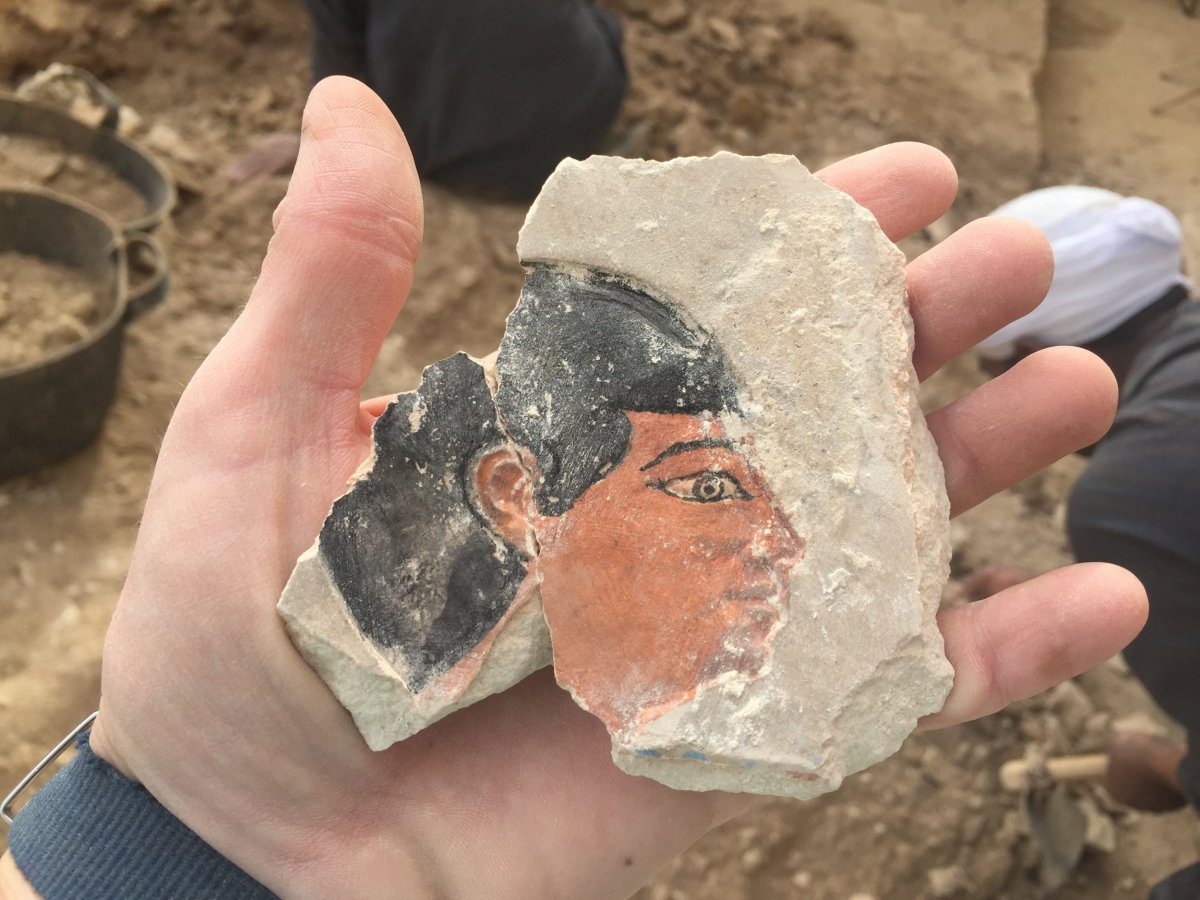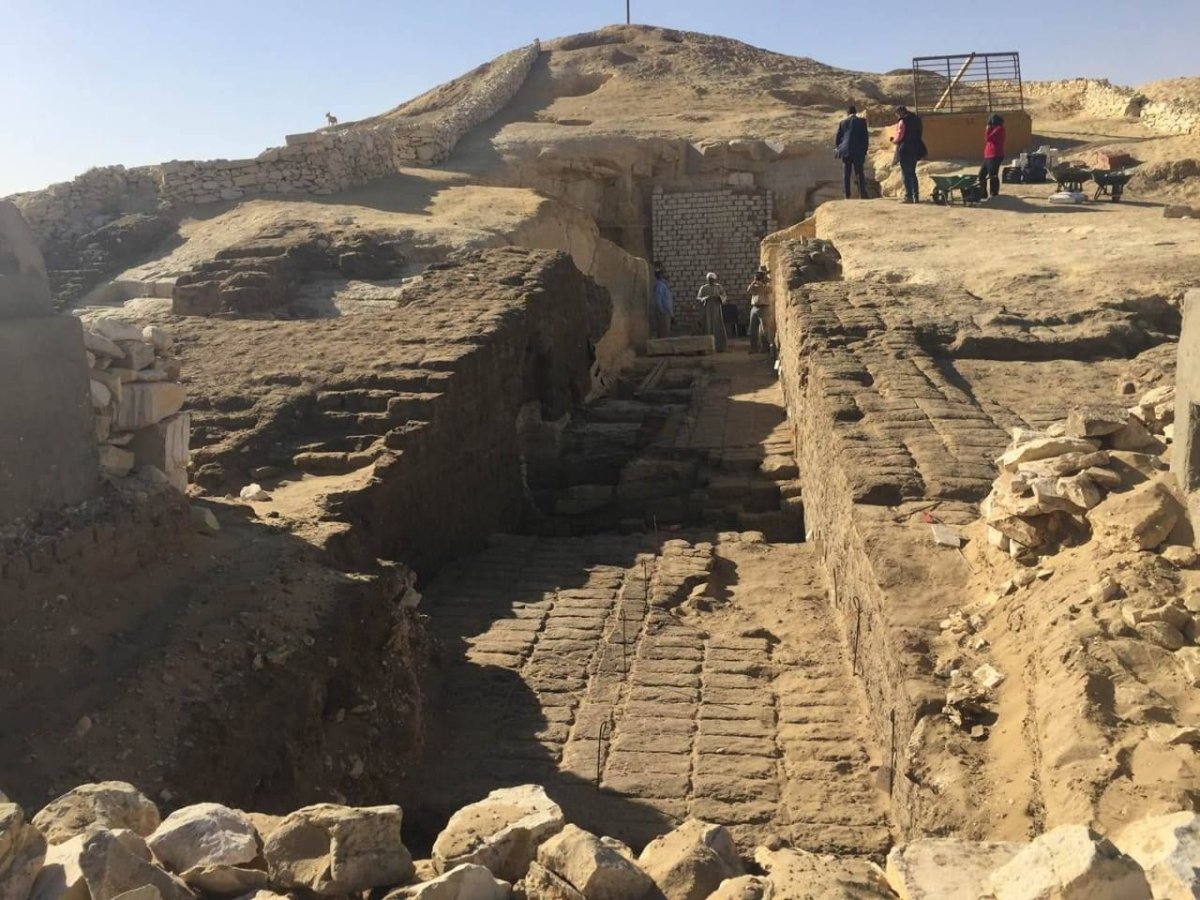Archaeologists have uncovered more than 800 tombs in Egypt thought to date back some 4,000 years. The massive haul of graves were revealed during an expedition into an ancient cemetery site archaeologists have been aware of for more than a century, Egypt's Ministry of Antiquities reported.
Although they aren't obvious above ground today, archaeologist and expedition co-leader Prof. Sarah Parcak said the graves would have featured roofs and even causeways to the nearby riverbank. "Given the number and density of tombs, it probably looked a lot like the cemeteries of New Orleans do today," she told Newsweek.

The gravesite lies between a pair of pyramids near Lisht, a village near Al Ayat to the south of Cairo, National Geographic stated. "Lisht is a fairly well known ancient site, and the location of Egypt's Middle Kingdom capital, called Itj-Tawy," Parcak said. "It is exciting because we have a real opportunity to lean more about the diverse classes and groups of people that lived and then died at Itj-Tawy." The city itself, she added, has never been discovered.
"[The discovery] adds a great deal to what we know about the Middle Kingdom, a time which has long been overlooked in favor of the earlier Old Kingdom 'Pyramid Age' and the later New Kingdom 'Golden Age' of Tutankhamen and Nefertiti," Professor Joann Fletcher of the University of York told Newsweek. By investigating and ultimately safeguarding the site—which has been known for illegal looting—Parcak and team have shed light on the "often shadowy" period, she added.
The Middle Kingdom, which stretched from about 2000 to 1650 B.C.E., is characterized by a "blossoming" of art and culture, Parcak told National Geographic. This period also saw Osiris, god of the underworld, rise to prominence among the deities commonly worshipped in Egypt.

The pyramids near the cemetery mark the graves of pharaohs Senusret I and his father Amenemhet I, kings of the Twelfth Dynasty of Egypt. This period is often considered a peak of the Middle Kingdom. "These tombs and the information we get from them will begin to address this gap of information about Egypt's Renaissance period," Parcak told Newsweek.
Amenemhet I's pyramid—which resembles those of Egypt's Old Kingdom—is poorly preserved. Much of the structure has disintegrated and it has been very difficult for archaeologists to reach the pyramid's interior. Once a highly imposing monument, it now stands at roughly 65 feet tall.
Researchers found the tombs during an expedition led by the University of Alabama-Birmingham and the Egyptian Ministry of Antiquities. They mapped the complex of tombs and began restoring an elite tomb, National Geographic reported.

"From this area, there really aren't very many tombs that are known, except for the royal tombs there," Kathryn Bard, an archaeologist at Boston University who was not involved in the work, told the publication. "That's why this cemetery is important."
"A discovery on this scale is incredibly exciting," Fletcher said. "[It] has huge ramifications for what we will be able to say about 'the real people' of Middle Kingdom Egypt, rather than just the royal family."
Officials have widely publicised recent archaeological discoveries such the remains of a Neolithic village. Tourism continues to suffer in Egypt following the 2011 Egyptian revolution. Minister of Antiquities Khaled al-Anani recently encouraged visitors to see a recently-unearthed sphinx statue, Egypt Today previously reported.
In other ancient news, archaeologists recently discovered an ancient board game in the hidden chamber of a castle located in today's Russia. The remains of an ancient lost city in China, meanwhile, are transforming scientists' understanding of the country's history.
This article has been updated to include further comment from Sarah Parcak and Joann Fletcher.
Uncommon Knowledge
Newsweek is committed to challenging conventional wisdom and finding connections in the search for common ground.
Newsweek is committed to challenging conventional wisdom and finding connections in the search for common ground.
About the writer
Katherine Hignett is a reporter based in London. She currently covers current affairs, health and science. Prior to joining Newsweek ... Read more
To read how Newsweek uses AI as a newsroom tool, Click here.








